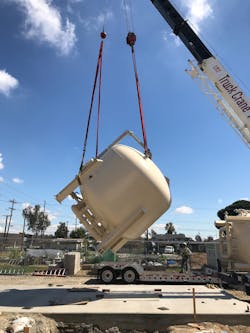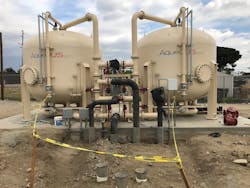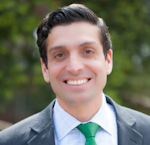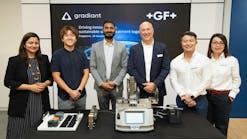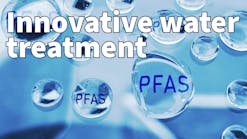When Golden State Water Company discovered a regulated chemical in several of its drinking water wells in 2017, the public utility and subsidiary of the publicly traded American States Water Company knew it faced a cleanup that would cost millions of dollars.
The chemical — 1,2,3-trichloropropane (TCP), a contaminant in popular pesticide products used from the 1950s into the 1980s — was found at unacceptable levels in Golden State’s wells during routine water testing. Something had to be done. Denise Kruger, who oversees operations at Golden State, felt strongly that those responsible for the water contamination should be the ones to pay for the cleanup of the man-made chemical, known to cause cancer in laboratory animals.
“We don’t pass on costs of water treatment to customers if there’s any way around it,” Kruger said. “I had to investigate all options.”
One of those options included finding and suing those responsible for contaminating the water.
1,2,3-TCP’s Toxic Legacy
The California Environmental Protection Agency added TCP to its list of chemicals known to cause cancer in 1999. Because of TCP’s extreme toxicity even at low levels, California’s Office of Environmental Health Hazard Assessment, in 2009, adopted one of the most stringent public health goals for TCP in drinking water ever established in the state. Though TCP is no longer used in pesticides, its noxious legacy remains a challenge for water systems today.
For Golden State, the first step was to shut down the wells and find alternative water sources as an immediate and expensive stopgap measure. As a long-term solution, the water company built two new water treatment plants to return water quality to acceptable standards. Because the need to respond was swift, Golden State had already spent millions of dollars replacing and cleaning up its water supply by the time Kruger met with SL Environmental Law Group (SL). SL is entirely focused on helping water suppliers seek compensation from polluters for the cost of remediation to their contaminated water systems.
The decision to pursue litigation against those responsible was not one Kruger took lightly. She had been mired in lawsuits before that had required considerable time and resources from her team. But in this instance, she and her fellow executives felt an ethical duty to hold the polluters accountable for contaminating the water with the known carcinogen. For Kruger and the team at Golden State, a lawsuit looked like the best approach to recoup the costs of cleaning the TCP out of the water.
Finding Attorneys with The Right Experience
Golden State found a partner for its legal process in the attorneys at SL. The first step in the process was for SL to gather all the facts in the discovery phase, which involved collecting and combing through 1.7 million documents.
With dozens of water systems throughout California, Golden State had been involved in several water contamination suits. All of them required an extraordinary amount of time and resources from Kruger’s team. But Golden State’s experience with SL was different.
A Seamless Process and Lighter Workload for Staff
Golden State began working with SL in 2018. In discovery, which includes reviewing past emails, documents, and other information, Kruger noticed a significant reduction in her team’s workload relative to what she expected.
“When you decide to pursue litigation, you always have to do a little heavy lifting in the beginning,” Kruger said. “But in this case, it was less than normal. We were able to send everything we had to SL, and they would cull what wasn’t relevant. In the past that was something we were left to figure out.”
As a result, Kruger was able to keep her focus on oversight of Golden State’s engineering, operations, customer service, planning and analysis, and technology teams.
“In other litigation, I’ve experienced a tremendous workload. This was such a different experience,” she said. “SL’s method reduced the workload of my team by at least 80 percent.”
Like many utilities, Golden State had worked with general or environmental lawyers that had little understanding of the intricacies of water utility operations and water contamination law. SL, by contrast, specializes in working with water utilities and focuses exclusively on water contamination law. Kruger was struck by how quickly and easily the SL team got up to speed.
“They were already experts in utility operations, so there was no need to educate them. The ramp-up was so fast,” she said.
A Bright Idea Brings a Speedy Result
While cases like these can often take seven years or more to resolve, SL’s expertise and insights helped Golden State obtain a settlement in less than two years. This meant Golden State recovered its contamination response costs relatively quickly and was able to return those to their customers in the form of lower water utility rates.
Key to the relatively speedy settlement was a legal strategy to go through federal courts instead of state courts, where a backlog of cases would delay proceedings for years. This TCP case was the first ever to be taken from state to federal court.
“Using their specific knowledge of water contamination law and the federal court system, [SL] offered a brilliant solution,” Kruger said. “We took it to federal court and settled in record time.”
“The speed at which we saw results, in this case a substantial settlement from the defendant, was unlike anything I’ve seen before.”
Overall, Kruger was impressed with both the outcome and the process that led to it. “Compared to previous litigations, it was just so much easier,” she said.
Polluters Held Accountable, Not Water Customers
Since its victory in late 2019, Golden State has been using the settlement proceeds to pay for a new treatment plant, rather than passing on the costs of construction to their customers. They’re also using the settlement to cover other contamination response costs, including the cost of purchasing expensive replacement water from alternative sources.
“We’re so happy to be able to give it all back to our customers. They shouldn’t have to pay for a polluting corporation’s mistakes,” Kruger said.
As one of the largest investor-owned utilities in California, this particular suit won’t be their last. Kruger already plans to use SL’s legal services for upcoming litigation over PFAS contamination, and she says they’re likely to do so again as new water pollution issues arise. WW
About the Author: Ken Sansone, partner at SL Environmental Law Group, advises cities and local government agencies to identify and hold groundwater polluters accountable. He can be reached at [email protected].

